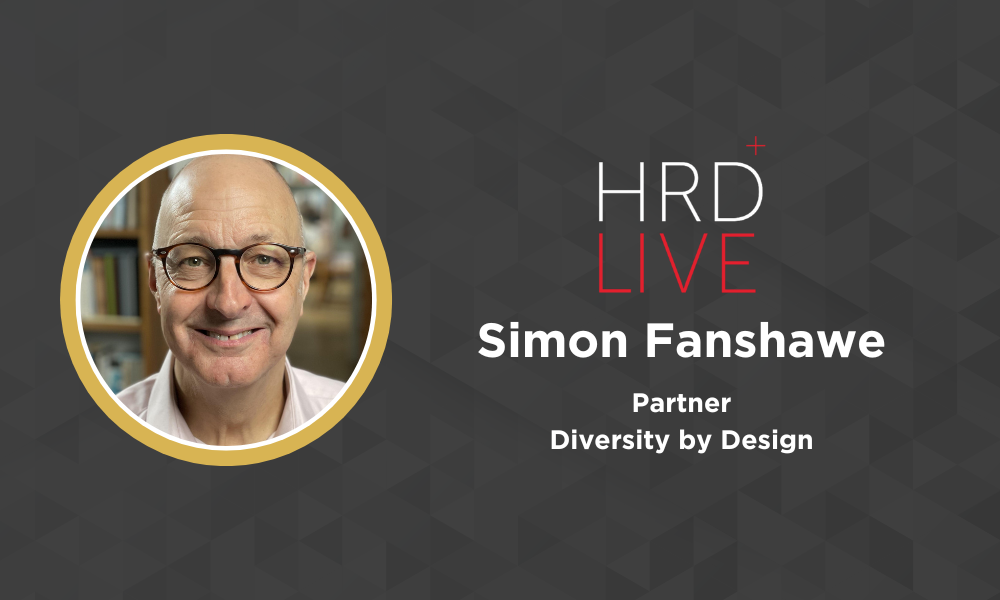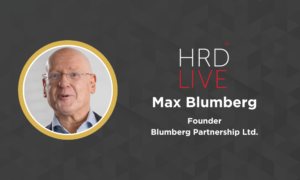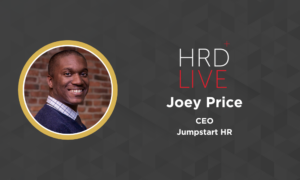Collaboration not conformity: Why DE&I programs must not be a set of rules
- 4 Min Read
Simon Fanshawe OBE argues DE&I programs that focus on finger-pointing are failing, and offers an alternative approach based on collaboration through diversity deficits and dividends.
- Author: HRD Connect
- Date published: Jun 14, 2023
- Categories

Podcast: Play in new window | Download
Subscribe: RSS
DE&I programs desperately need a refreshed approach, argues Simon Fanshawe, OBE. “It’s become a set of prohibitions and rules,” he explains. It’s all about what you can’t say, or what you can’t do.”
Fanshawe argues the point of diversity and inclusion celebrate our differences. Whilst we attempt to walk in other people’s shoes, we will never fully understand their experiences. Diversity and inclusion programs should be a tool to prevent conformity. “What we have to be able to do is collaborate, and we only collaborate through our differences,” he explains.
In the final episode of the HRD Live podcast mini-series on Diversity, Equity, Inclusion, and Belonging, Fanshawe talks through some of the biggest misconceptions, mistakes, and consequences of ill-informed DE&I programs. We learn how HR leaders can focus on tackling deficits and communicating dividends to deliver a long-term solution to DE&I programs that avoids finger-pointing.
Avoiding prohibitive DE&I programs
Fanshawe breaks down problematic language and behavior into three main categories: Careless, thoughtless, and malicious. For the most extreme case, malicious behavior, he argues organizations need to treat incidents carefully and with evidence to assess what happened.
Careless or thoughtless cases are “where our intentions and impact have a gap between them. It is inevitable,” he explains. Fanshawe argues DE&I programs shouldn’t (and can’t) try to stop these mistakes. Instead, they should “help people contribute and collaborate with each other at their best, so that we accept difference.”
DE&I deficits and dividends
Fanshawe believes it’s useful to think about diversity in terms of deficits and dividends. The deficits are the negative experiences of minoritized groups that we know have historically existed in the workplace. “To make progress on this, the first thing is to really understand what’s happening with those deficits,” he states. “So, don’t stop with the headlines.”
By this, Fanshawe means thoroughly researching deficits to understand whether it is a problem specific to your organization, or whether it’s an industry-wide issue your company may struggle to control and offers the example of engineering and white-male-dominated stem programs.
Having understood your deficits, Fanshawe goes to explain you will have a greater idea of the mechanisms that will unleash and celebrate your diverse talent.
Diversity dividends will depend on your objectives and how you bring people together to collaborate. He offers the example of a College English Department that needed help hiring an English from a location outside of the UK such as India, Nigeria, or the Caribbean. On the face of it, this may suggest a dividend of ethnic diversity. However, the Department was seeking cultural diversity, and making such a hire brought a necessary understanding of English Literature authors from such countries were publishing.
Driving long-term inclusion strategies
By following this model, Fanshawe argues organizations can develop a far more collaborative and celebratory approach to diversity and inclusion. He emphasizes the importance of understanding who and why you are bringing each individual into strategy conversations. “Think about what everyone is bringing differently into the achievement of the goals you’ve set yourself,” he says.
The vital step is to create spaces that are safe for disagreement, rather than safe from disagreement. By doing so, people can bring and celebrate their differences into conversations around talent or performance strategy, rather than fostering conformity.
Timestamps
00:07 – Introduction
00:55 – What are the biggest misconceptions about DE&I programs among HR directors?
04:10 – What are some potential unintended consequences of DE&I programs, such as employee resource groups (ERGs)?
08:42 – Once organizations have defined their DE&I goal, how can they go about creating and equipping their workforce to achieve it?
13:09 – How does this approach to DE&I programs help meet organizational or business goals?
16:32 – Why does this approach deliver a long-term solution to DE&I rather than reducing it to a set of rules, language, and finger-pointing?
________________
Simon Fanshawe is a writer, broadcaster, speaker, and non-executive director in the public and private sectors. He is a partner at Diversity by Design. He was a co-founder of the lesbian and gay equality lobby group Stonewall. Simon is also a co-founder of The Kaleidoscope Trust, the only British charity working exclusively on gay human rights worldwide.
To listen to more episodes of the HRD Live Podcast view our full archive on HRD Connect. Alternatively, listen and subscribe on Apple or Spotify!









